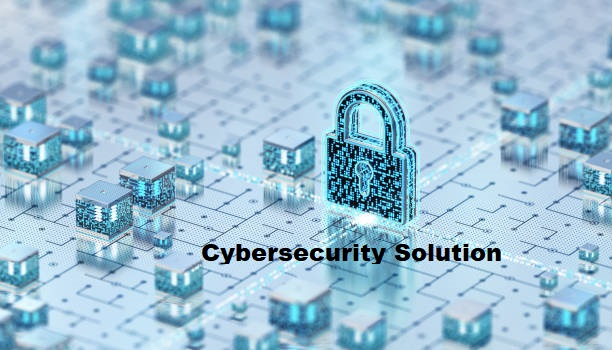What Are Advanced Cybersecurity Solutions?
Advanced cybersecurity solutions are a suite of technologies, tools, and strategies designed to protect digital assets, networks, and systems from cyber threats. These solutions address modern challenges such as ransomware, phishing, zero-day exploits, and insider threats. By integrating advanced technologies like AI, ML, and automation, these solutions provide real-time threat detection, proactive defense mechanisms, and rapid incident response.
The Evolution of Cybersecurity Solutions
Cybersecurity has come a long way since its inception. Here’s a brief look at its evolution:
- Early Days (1970s-1980s): Cybersecurity began with basic measures like password protection and simple firewalls, primarily focused on securing mainframe computers.
- Rise of Antivirus Software (1990s): The 1990s saw the emergence of antivirus software and intrusion detection systems (IDS), which became essential tools for combating malware and network breaches.
- Expansion of Security Tools (2000s): The 2000s introduced more sophisticated solutions, including virtual private networks (VPNs), encryption technologies, and intrusion prevention systems (IPS).
- Modern Era (2010s-Present): Today, cybersecurity solutions incorporate advanced technologies like AI, ML, and blockchain. These tools are designed to tackle increasingly complex and evolving cyber threats.
Benefits of Advanced Cybersecurity Solutions
Implementing advanced cybersecurity solutions offers numerous advantages for organizations:
-
- Proactive Threat Detection: Advanced solutions use AI and ML to identify and respond to threats in real-time, reducing the risk of breaches.
- Enhanced Data Protection: Encryption, data loss prevention (DLP), and secure access controls ensure sensitive data remains safe from unauthorized access.
- Improved Incident Response: Automated response mechanisms and real-time monitoring enable organizations to quickly contain and mitigate cyberattacks.
- Regulatory Compliance: Many solutions include features to help organizations comply with regulations like GDPR, HIPAA, and PCI-DSS, reducing legal and financial risks.
- Business Continuity: By minimizing downtime and protecting critical systems, advanced cybersecurity solutions ensure uninterrupted operations.
- Customer Trust: Robust cybersecurity measures demonstrate a commitment to protecting customer data, enhancing trust and loyalty.
- Scalability: These solutions are designed to grow with your organization, adapting to changing security needs and expanding digital environments.
Types of Advanced Cybersecurity Solutions
Advanced cybersecurity solutions come in various forms, each addressing specific security challenges. Here are the most common types:
- Endpoint Security: Protects devices like laptops, smartphones, and tablets from malware, ransomware, and other threats. Examples include antivirus software and endpoint detection and response (EDR) tools.
- Network Security: Safeguards network infrastructure from unauthorized access and attacks. Tools include firewalls, intrusion detection and prevention systems (IDPS), and VPNs.
- Cloud Security: Protects data and applications hosted in cloud environments. Solutions include cloud access security brokers (CASB) and encryption.
- Application Security: Focuses on securing software applications from vulnerabilities. Tools include web application firewalls (WAF) and runtime application self-protection (RASP).
- Data Security: Ensures sensitive data is protected through encryption, tokenization, and data loss prevention (DLP) tools.
- Identity and Access Management (IAM): Manages user identities and controls access to systems and data. Features include multi-factor authentication (MFA) and single sign-on (SSO).
- Threat Intelligence: Provides insights into emerging threats and vulnerabilities. Tools include security information and event management (SIEM) and threat-hunting platforms.
- Zero Trust Architecture: A security model that assumes no user or device is trusted by default, requiring continuous verification and strict access controls.
Key Features of Advanced Cybersecurity Solutions
Advanced cybersecurity solutions offer a range of features to combat modern threats:
- Real-Time Threat Detection: AI and ML analyze data to identify patterns and anomalies, enabling real-time threat detection.
- Automated Incident Response: Automated tools quickly contain and mitigate threats, reducing the impact of cyberattacks.
- Data Encryption: Converts sensitive data into an unreadable format, ensuring it remains secure even if intercepted.
- Multi-Factor Authentication (MFA): Adds an extra layer of security by requiring multiple forms of verification for access.
- Security Information and Event Management (SIEM): Provides real-time monitoring and analysis of security events across the organization.
- Endpoint Detection and Response (EDR): Monitors endpoint activity and responds to threats in real-time.
- Threat Intelligence Integration: Offers insights into emerging threats and vulnerabilities, enhancing proactive defense measures.
- Zero Trust Architecture: Ensures continuous verification of user identities and device security, even within the network.
Implementation Strategies for Advanced Cybersecurity Solutions
Implementing advanced cybersecurity solutions requires careful planning and execution. Here are some key strategies:
- Define Objectives: Identify the specific security challenges and goals the solutions should address.
- Conduct a Risk Assessment: Evaluate the organization’s current security posture and identify vulnerabilities.
- Choose the Right Solutions: Select tools that align with your organization’s needs, budget, and industry requirements.
- Engage Stakeholders: Involve executives, IT teams, and end-users to ensure buy-in and support.
- Develop an Implementation Plan: Create a detailed plan with timelines, milestones, and resource allocation.
- Data Migration and Integration: Ensure seamless migration of data and integration with existing systems.
- Training and Change Management: Train employees and implement change management strategies to ease the transition.
- Testing and Validation: Thoroughly test the solutions before full deployment to ensure they function as expected.
- Post-Implementation Support: Provide ongoing support to address issues and ensure the solutions remain effective.
Challenges in Implementing Advanced Cybersecurity Solutions
While advanced cybersecurity solutions offer significant benefits, their implementation can be challenging:
-
- High Costs: Implementing these solutions can be expensive, requiring careful budgeting and resource allocation.
- Complexity: Advanced tools often require specialized knowledge and expertise to configure and manage effectively.
- Resistance to Change: Employees may resist new security measures, necessitating effective change management strategies.
- Data Migration Issues: Migrating data from legacy systems can be complex and time-consuming.
- Integration Challenges: Integrating new solutions with existing systems may require significant effort and technical expertise.
- Vendor Dependence: Organizations may rely heavily on vendors for updates and support, making it essential to choose reliable partners.
Future Trends in Advanced Cybersecurity Solutions
The cybersecurity landscape is constantly evolving. Here are some trends shaping the future of advanced cybersecurity solutions:
- AI and Machine Learning: AI and ML will play a larger role in threat detection, predictive analytics, and automated response.
- Zero Trust Architecture: This model will become more widespread, emphasizing continuous verification and strict access controls.
- Quantum Computing: While still in its early stages, quantum computing could revolutionize encryption and threat detection.
- Cybersecurity Mesh: A modular approach that integrates various security tools into a cohesive framework.
- Enhanced Threat Intelligence: Predictive analytics and AI-driven insights will improve threat detection and response.
- Privacy-Enhancing Technologies: Tools like homomorphic encryption will help organizations protect data while deriving insights.
- Automation and Orchestration: Automating routine tasks and streamlining incident response will improve efficiency and effectiveness.

